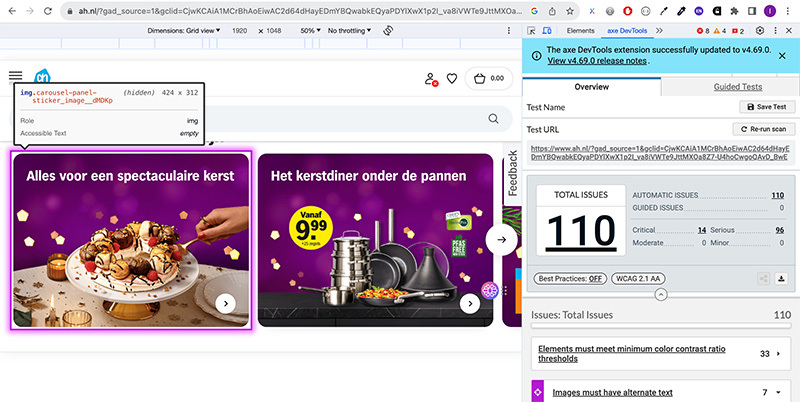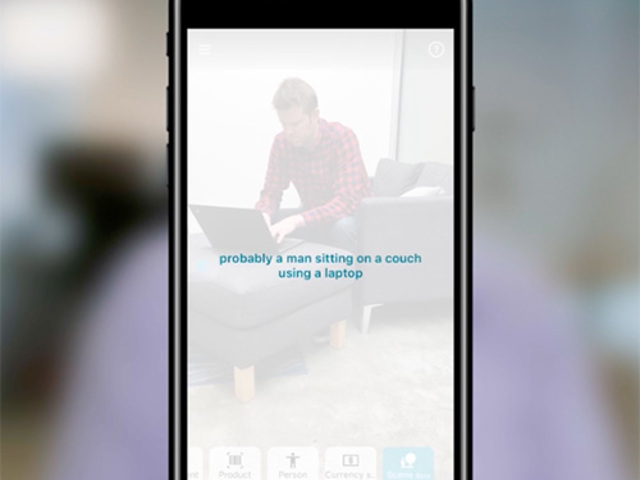
How can AI contribute to an accessible web?
In the world of web development, awareness about accessibility has undergone a true revolution. When designing and testing websites and applications, it is now essential to ensure inclusivity. In this knowledge tip, we'll dive deeper into the role of artificial intelligence (AI) as an indispensable ally. Learn how AI can play a crucial role in optimising accessibility.
Simplifying Accessibility Testing
AI can improve accessibility testing by automating certain tasks, such as analysing websites for potential issues such as missing alt text, low colour contrasts, or incorrectly labelled forms. In addition, AI can ensure accessibility for people with various disabilities. By simulating the use of a website with a screen reader or other assistive technology, obstacles can be identified.
One example is Deque Systems' open-source accessibility testing tool Axe, which uses AI to analyse websites and applications for accessibility issues. It analyses web pages and identifies specific elements that do not comply with the Web Content Accessibility Guidelines (WCAG). When Axe detects an inaccessible element, it not only marks the location on the web page, but also provides detailed information about which WCAG directive is not being adhered to.

Speech recognition for the visually impaired
Speech-to-text tools make it possible for people with visual impairments to use digital applications. This is done by means of voice commands. Voice-activated virtual assistants such as Siri, Google Assistant and Alexa already use this to perform tasks, look up information and control devices with voice commands.
Automatic subtitles and translation
For people with hearing impairments or language barriers, automatic subtitling and translation offers a solution. AI algorithms recognise spoken text and languages. Real-time translation and subtitling allow for faster and easier communication.
YouTube, for example, uses AI to generate automatic captions for videos. Not only does this help people with hearing impairments, but it also makes the content more accessible to non-English speaking users by offering automatic translations.

Image Recognition for Visual Accessibility
AI's image recognition helps people with visual impairments by describing objects and spaces. This allows them to follow videos that feature little talking, contributing to a more inclusive online experience. Seeing AI, developed by Microsoft, uses image recognition to assist visually impaired users. The app can read texts, describe colours, identify objects, and recognise people through a smartphone's camera.
Predictive text
AI makes predictions based on input data, such as text input on websites. This helps personalise digital interactions through text suggestions, automatic data entry, and user interface customisations, especially beneficial for people with motor impairments.
See example of the Google Chrome Extension Lightkey with which you can predict texts in an email, for example.

Facilitating text
AI can be used to summarise and simplify texts for people with low literacy levels. Algorithms identify important information in a text and present it in concise form. Text Cortex , for example, offers an editor in which you can upload text or an add-on for simplifying and summarising texts in Google Chrome and Docs, among others.

Personalized future with AI
In the future, AI will play a crucial role in shaping an inclusive digital experience. The landscape of digital accessibility is evolving, and AI's power lies in its ability to provide personalised user experiences. This technology continuously learns from user behaviour and automatically adapts the interface to individual needs, such as adjusting text size and contrast for people with visual impairments.
The transition to digital inclusivity, or an accessible web, is not only achieved with technological advancements, but also with a new approach. Innovation and user feedback are essential for a future where the web is accessible to everyone, regardless of abilities or limitations. AI is driving this positive change and lighting the way to an inclusive digital world.
Sources
https://digitaaltoegankelijk.nl/nieuws/hoe-artificial-intelligence-ai-kan-bijdragen-aan-een-digitaal-toegankelijke-toekomst/
https://www.ux-republic.com/nl/de-vele-mogelijkheden-van-lia-ten-dienste-van-toegankelijkheid-en-inclusiviteit/
https://bootcamp.uxdesign.cc/accessibility-testing-ui-with-ai-5a313d5f9e4a
https://www.deque.com/axe/
https://www.microsoft.com/en-us/ai/seeing-ai
https://www.lightkey.io/predictive-text-in-google-chrome
https://textcortex.com/nl/tekstsamenvatter

Do you want to know how we can optimally apply this tip for your website?
I would like to tell you more about it.
Our tips are also highly appreciated by:




